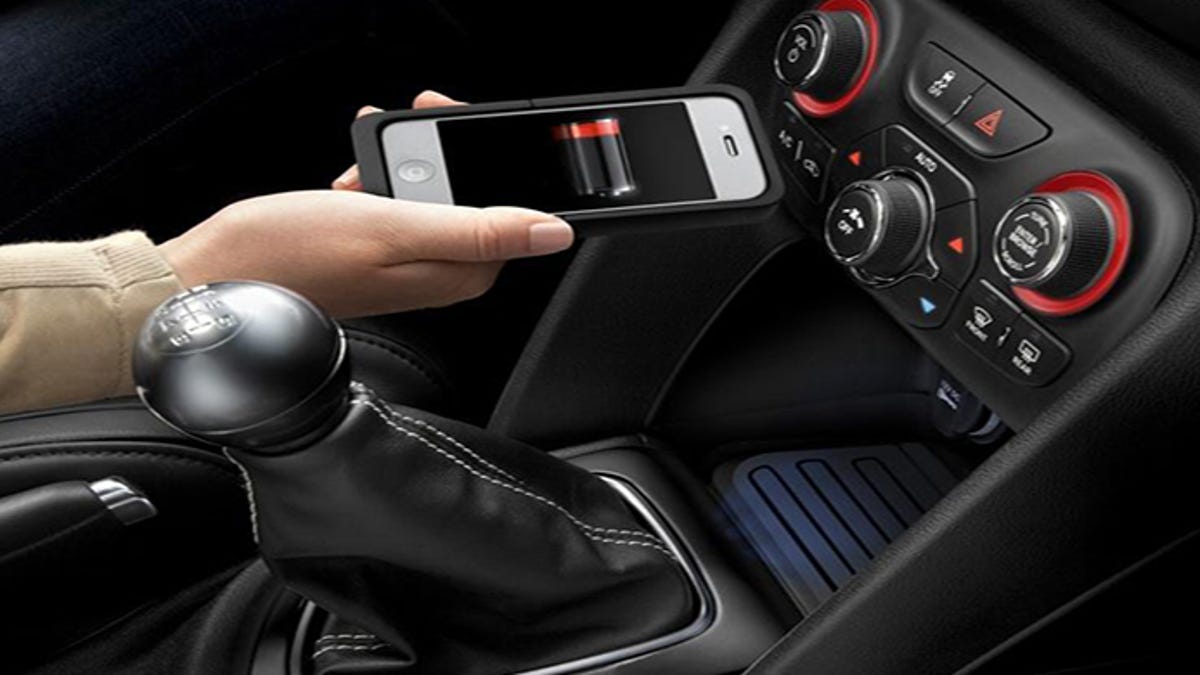JVIS, d-Wired resurrect conductive wireless charging in the car
Conductive wireless charging joins the inductive standards in the battle to charge your phone while you drive.

Joining the Qi and Powermat inductive wireless charging standards is conductive wireless charging, a technology that's been around for quite a few years now and is recently being repurposed by JVIS USA, LLC for in-car use.
What is it? How does it work?
The wireless conductive charging system essentially consists of two major parts: the "constellation" of contact points on the device receiving the charge that adapts the product for wireless charging and the charging pad itself. The pad features conductive metal strips arranged parallel to one another.
The strips receive power (in this case, from the car's electrical system) and pass that juice on to the device via its metal contact points. It doesn't matter where you place the device on the charging pad as long as at least two of the constellation's pins are touching the pad, and you can charge as many devices as you can fit onto the charging pad simultaneously.
JVIS tells us that the pad is protected with an automatic shutoff feature, so it won't shut off if you spill water or coffee on it. Simply wipe it dry and continue charging.
The amount of juice that flows through the device is determined by its specific constellation adapter; so you can drop both a smartphone and a laptop on the same pad and they'll each be able to receive the appropriate amount of power.
If this sounds familiar, it's because the technology has been around for years. Check out this CNET First Look video demonstrating a wireless conductive charging desk pad dating back to 2009. JVIS is licensing the charging technology from fliCharge (which holds the patents) and is pushing to jump-start adoption starting in the car.
Why not inductive charging?
Gregory Clark of d-Wired, the product developer and licensing agent alongside JVIS, emphasizes conductive charging's lack of electromagnetic field radiation (EMF) and significantly lower heat levels when compared to those associated with Qi charging. Currently, the EMF from inductive chargers is fairly low because the energy transferred to charge a smartphone is so low, but as we'll discuss momentarily, JVIS is setting its aspirations a bit higher.
Where inductive charging (such as Qi) is only about 70 to 80 percent efficient at its best, conductive charging is essentially as efficient as plugging your phone into the USB charger that you currently use. This is because a conductive charger makes a direct physical connection between the charging device and the power source, just as your current USB charger does. Which of course prompts the question, "why not just plug your phone into a USB charger?"
For phones, d-Wired's Clark told us that adapting to conductive charging adds the convenience of being able to simply drop your device onto a pad. However, JVIS also states that phones are just the tip of the iceberg, and conductive charging opens many more opportunities for powering devices in the car.
Who's using it? Where can you find it?
Today, you can find conductive wireless charging in a few cars as a dealer- or factory-installed option. In the limited edition Scion xB RS 10.0, it appears under the fliCharge brand. The technology is a Mopar option in the Dodge Dart and will soon make an appearance in the new Chrysler 200, SRT Viper, and Dodge Caravan.
On the other side of the equation, JVIS and d-Wired haven't mentioned any partnerships with phone manufacturers to build conductive charging constellations into handsets. Qi inductive charging, on the other hand, boasts compatibility with dozens of (mostly Android) phones. D-Wired's Clark points out that conductive charging adapters are available for iOS and Samsung devices with universal USB adapter pucks filling in the blanks between.
D-Wired's representative explained to us that the company feels the adapter is simply more universal and flexible than relying on phone manufacturers to build in the functionality. Remember, Apple requires an adapter regardless of whether you go with conductive or inductive charging. In partnership with Mopar, d-Wired is offering owners who purchase a vehicle equipped with a JVIS conductive charging pad a voucher redeemable for a free charging case or puck adapter.
More than just phone charging
Today, wireless conductive charging is primarily used to keep a phone topped off while you go about the business of driving. However, we're told the tech is powerful enough to charge a laptop or digital camera, something that you can't currently do with inductive chargers.
JVIS states that it is working with tool companies to add its charging constellations to power tools and their batteries. One day, a contractor might be able toss his electric equipment and extra batteries into the lock box in his or her pickup's bed in the morning and arrive on site with those tools fully charged.
For now, the charging pads that are found in cars are pretty small. The conductive charging kit offered on the Dodge Dart is tucked into a bin that's Mopar's own site warns is too small to fit a Samsung Galaxy S3, while the armrest console charger in the Scion xB doesn't look like it can accommodate more than one phone. However, with more partnerships and applications promised on the horizon, we may start to see conductive wireless charging growing in dimension, capacity, and scope.

